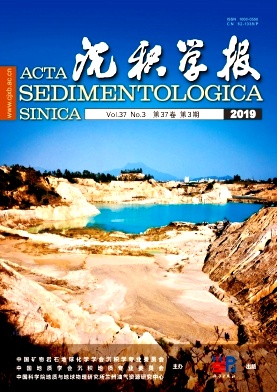Comparison of Dynamic Image Analysis and Thin-section Measuring Analysis Grain-size Test Method
doi: 10.14027/j.issn.1000-0550.2018.173
- Received Date: 2018-08-08
- Rev Recd Date: 2018-09-25
- Publish Date: 2019-06-10
-
Key words:
- grain-size test /
- grain-size analysis /
- dynamic image analysis /
- thin-section measuring analysis /
- comparison and calibration
Abstract: Compared with traditional grain-size test methods, research on the application of the dynamic image and thin-section measuring methods in underground sedimentary rock grain-size analysis is currently relatively weak. In this paper, taking 12 sandstone samples from Well X100 in the Lunnan area, Tarim basin and from underwater distributary channels of Triassic, we compared and analyzed the results obtained using the dynamic image and thin-section measuring methods. The content of each grain gradation, grain-size curves, and grain-size parameters are included in the testing results. Then calibration research of the testing results obtained from the thin-section measuring method was carried out. This paper aims to make the two methods more widely applicable to grain-size analysis in the future. The research results show that, compared with results obtained from the thin-section measuring method, the content of coarser sand measured using the dynamic image method is higher and that of finer sand is correspondingly smaller. The clay-to-silt content and medium sand content represent the boundary line which differentiates the two methods. The sharp contrast of detecting particle amount and lithologic characteristics are the main reasons for the difference, upon which the measurement range, measurement principle, and particle shape also exert some influence. The calibration method for the thin-section measuring method proposed here is based on rock type and makes the correlation coefficients (R2) of the testing results (content of fine sand to coarse sand and grain diameters) by the post-calibrated thin-section measuring method with the dynamic image method increase from 0.25-0.80 to 0.88-0.95, achieving the primary purpose of calibration and improving the accuracy of the thin-section measuring method.
| Citation: | CHEN MaiYu, XU ShouYu, ZHANG LiQiang, WANG Zhao, XU ZiJing. Comparison of Dynamic Image Analysis and Thin-section Measuring Analysis Grain-size Test Method[J]. Acta Sedimentologica Sinica, 2019, 37(3): 502-510. doi: 10.14027/j.issn.1000-0550.2018.173 |






 DownLoad:
DownLoad: